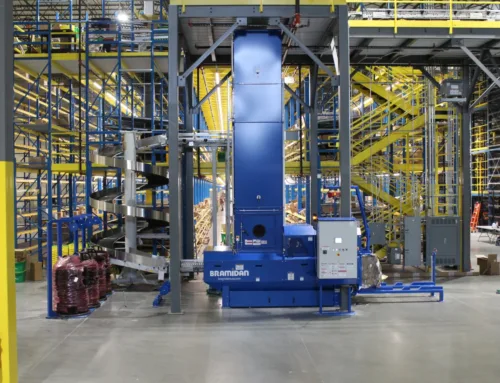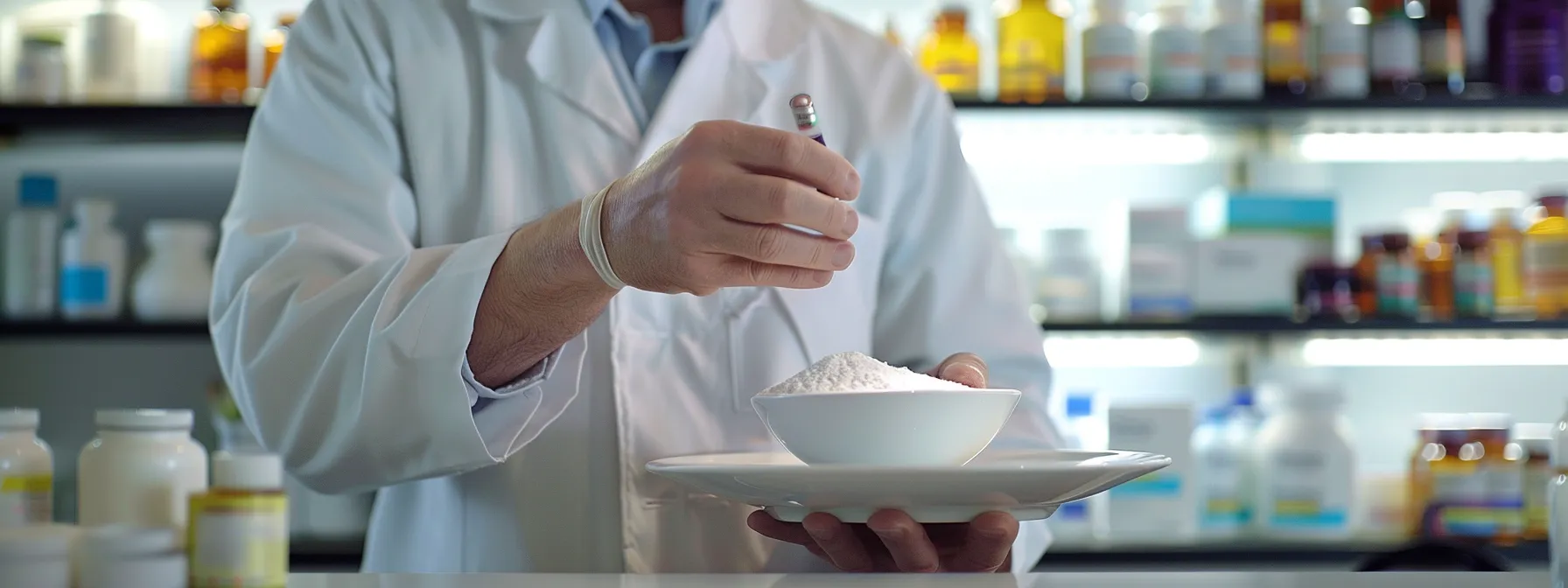
Table Of Contents:
- Comprehensive Guide to Essential Pharmacy Compounding Equipment
- Understanding the Basics of Pharmacy Compounding Equipment
- The Role of Equipment in Pharmacy Compounding
- Key Differences Between Traditional and Compounding Pharmacies
- Must-Have Equipment for Every Compounding Pharmacy
- Balances and Scales for Precise Measurements
- Mixers and Blenders for Homogeneous Mixtures
- Molds and Capsule Machines for Custom Dosages
- Advanced Tools for Complex Compounds
- Homogenizers for Stable Emulsions
- Lyophilizers for Removing Solvents
- Controlled Environment Equipment for Sensitive Formulations
- Safety and Sterilization Equipment Essentials
- Laminar Airflow Hoods for Contamination Prevention
- Autoclaves for Sterilizing Tools and Containers
- Personal Protective Equipment (PPE) for Pharmacist Safety
- Measuring and Quality Control Instruments
- pH Meters for Acidity and Alkalinity Testing
- Refractometers for Concentration Measurements
- Viscometers for Assessing Liquid Flow Properties
- Keeping Up With Technology in Compounding Equipment
- Automation in Compounding for Efficiency and Accuracy
- Software for Formulation Management and Documentation
- Trends in Compounding Equipment Innovation
- Conclusion
Navigating the realm of pharmacy compounding equipment can be complex, particularly with the growing demand for customized medications in both human and veterinary applications. At End2End Logix, we understand the importance of having the right pharmacy equipment, not just for compliance with health policies but also to ensure the safety and efficacy of compounded products. Knowledge about essential tools aids pharmacy professionals in optimizing their operations while meeting industry standards. As you delve deeper into this guide, you’ll uncover the must-have items for every compounding pharmacy as well as advanced tools that can elevate your service offerings. Keep reading to equip yourself with insights that will enhance your compounding practice and ensure quality care for your patients.
Understanding the Basics of Pharmacy Compounding Equipment
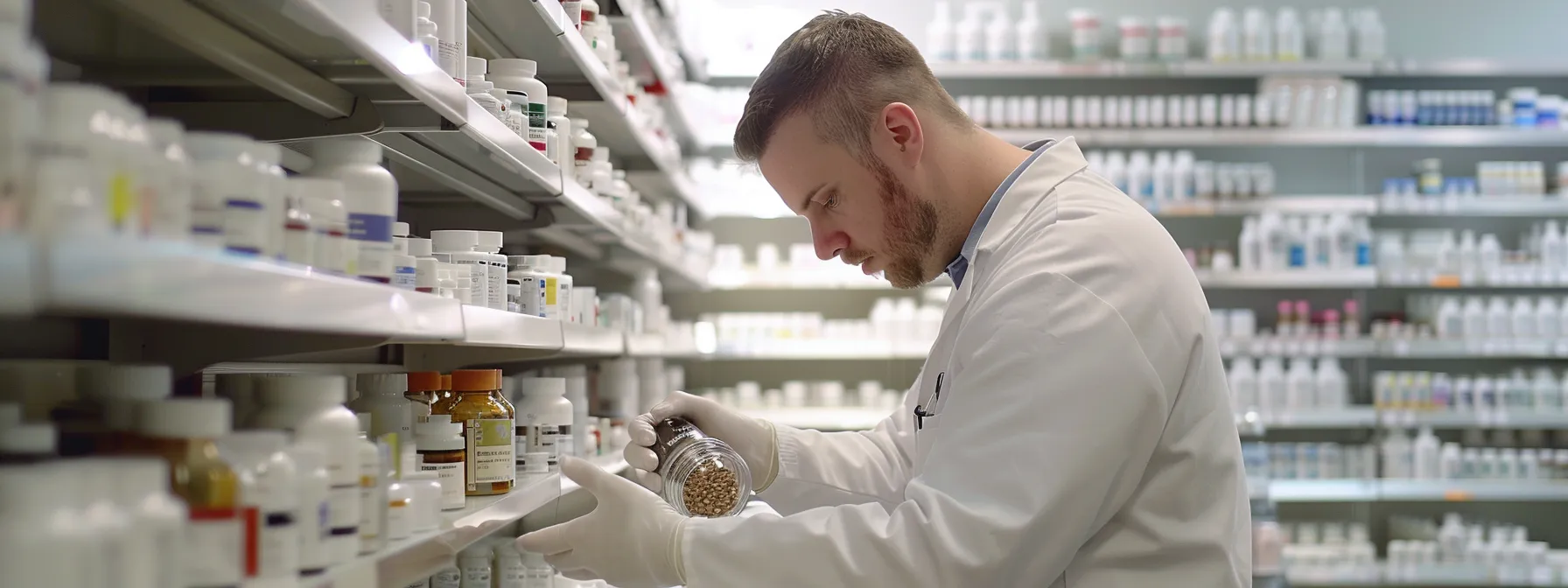
In the realm of compounding pharmacies, the right End2End Logix equipment plays a pivotal role in ensuring safety, efficacy, and compliance with quality control measures. Unlike traditional pharmacies, compounding facilities need specialized veterinary equipment to mix, measure, and prepare medications tailored to individual patient needs, which often involves unique active ingredients pharmacy equipment. Understanding these differences is essential, as it directly impacts the certification process and the protocols followed during audits. Familiarizing oneself with the specific equipment required for compounding fosters a safer and more effective pharmacy environment, ultimately benefiting both pharmacists and patients alike.
The Role of Equipment in Pharmacy Compounding
In the demanding environment of a compounding pharmacy, the right equipment is essential for delivering quality pharmaceutical care. Automation has revolutionized our ability to streamline processes, reduce human error, and enhance efficiency in medication preparation. Investing in sophisticated tools not only supports compliance with regulations but also ensures that we provide the highest standard of care to our patients.
Within the laboratory, every piece of equipment has a role in the overall success of compounding operations. Whether it’s balancing precise measurements or integrating unique active ingredients, the investment in reliable machinery can influence our operational fees. It’s vital for our pharmacies to maintain a documented affidavit that confirms the use of appropriate equipment, supporting our commitment to quality and safety.
- Understanding the significance of equipment in pharmaceutical care
- Exploring automation‘s impact on efficiency and accuracy
- Recognizing the role of a well-supported laboratory environment
- Highlighting the importance of fees associated with equipment investment
- Documenting compliance through affidavits for safety assurance
Key Differences Between Traditional and Compounding Pharmacies
The primary distinction between traditional and compounding pharmacies lies in their operational focus. Traditional pharmacies typically dispense pre-manufactured medications that adhere to regulations set forth by law. In contrast, compounding pharmacies prepare customized medications based on a physician‘s specific prescriptions, often involving unique dosages or formulations that meet the individual needs of patients. This requires a greater emphasis on meticulous oversight during the inspection process to ensure quality and safety.
Another key difference is the role of pharmacy technicians in compounding environments. In addition to dispensing medications, they are involved in the direct preparation of compounded formulations, which includes mixing active ingredients. This often raises the need for specialized training, including knowledge of immunization practices that some compounding pharmacies may also provide, ensuring that technicians are equipped to handle diverse responsibilities related to patient care.
- Traditional pharmacies dispense pre-manufactured medications.
- Compounding pharmacies create customized medications based on physician prescriptions.
- Inspection processes are critical in maintaining quality in compounding facilities.
- Pharmacy technicians have expanded roles that include formulation preparation.
- Specialized training is often necessary for technicians in compounding settings.
Now that we’ve explored the fundamentals of pharmacy compounding equipment, let’s dive into the must-have tools that every compounding pharmacy needs. These essential pieces not only enhance efficiency but also ensure the highest quality in medication preparation.
Must-Have Equipment for Every Compounding Pharmacy

In a compounding pharmacy, having the right equipment is paramount to ensure accuracy and quality in the medications we create. Balances and scales, for instance, are indispensable tools for pharmacy technicians, allowing for precise measurements that are critical in preparing custom doses. When addressing specific patient needs, mixers and blenders come into play to guarantee that every formulation achieves a homogeneous mixture, which is essential for both efficacy and safety in health care. Additionally, using molds and capsule machines makes it possible to create custom dosages that fit individual patient requirements, all while ensuring that the expiration date of each compounded medication is clearly marked. This meticulous attention to detail not only enhances patient care but also upholds the standards necessary in a successful compounding environment.
Balances and Scales for Precise Measurements
In my experience, balances and scales are fundamental tools in the compounding pharmacy, crucial for achieving accurate measurements. These devices must document each weighing process to maintain compliance with strict regulatory standards, especially when working with controlled substances. I recommend selecting equipment that features antimicrobial surfaces to ensure that we minimize contamination risks while maintaining the integrity of our formulations.
Moreover, the use of balances and scales is not just about accuracy; it also ties into broader safety protocols within the pharmacy. Utilizing equipment in conjunction with a fume hood enhances our protection when dealing with hazardous materials. The proper implementation of these tools reflects our commitment to safety and quality in patient care:
- Accurate measurements are essential for effective compounding.
- Documentation is necessary to comply with regulations.
- Antimicrobial surfaces help reduce contamination risks.
- Integrating a fume hood ensures safety when handling hazardous substances.
- Balances and scales reflect our dedication to quality care.
Mixers and Blenders for Homogeneous Mixtures
Mixers and blenders are essential tools within a compounding pharmacy, ensuring that each medication achieves a homogeneous mixture. In my practice, I’ve seen the impact these devices have on creating accurate dosage forms, particularly when working with vaccines that require precise ingredient integration. Maintaining a workspace equipped with a sink nearby allows for optimal hygiene practices during mixing, supporting both operational efficiency and occupational safety and health standards.
When we utilize high-quality mixers and blenders, we not only enhance the effectiveness of our formulations but also foster a safer environment for pharmacy personnel. Proper cleaning protocols after each use are crucial; consequently, I ensure that all equipment is sanitized regularly to minimize contamination risks. This attention to detail reinforces our commitment to excellence in patient care and compliance with safety regulations:
- Mixers and blenders ensure homogeneous mixtures.
- Optimal equipment enhances dosage form accuracy.
- Proximity to a sink supports hygiene practices.
- Regular sanitation mitigates contamination risks.
- Commitment to safety standards is vital for pharmacy environments.
Molds and Capsule Machines for Custom Dosages
Molds and capsule machines are vital for producing custom dosages in nonsterile compounding, allowing us to cater to specific patient needs effectively. During my time at pharmacy school, I learned the significance of these tools not only in creating formulations that adhere to statutes governing compounding practices but also in ensuring that each medication is tailored specifically to the individual’s prescription. By using molds and capsule machines proficiently, we enhance patient outcomes and maintain the integrity of the medications we prepare.
Using high-quality molds and capsule machines streamlines the process of preparing individualized medications while supporting adherence to the prescription monitoring program. Proper training in the functionality of this equipment is essential, as it directly impacts our efficiency and compliance within the pharmacy environment. Ensuring every compounded medication is precisely dosed reflects our commitment to quality care and patient safety, two pillars that guide our practice daily.
As we grasp the essentials for setting up a compounding pharmacy, the next step is to elevate your practice with the latest innovations. Let’s delve into the advanced tools that simplify the creation of complex compounds, enhancing efficiency and precision in your workflow.
Advanced Tools for Complex Compounds
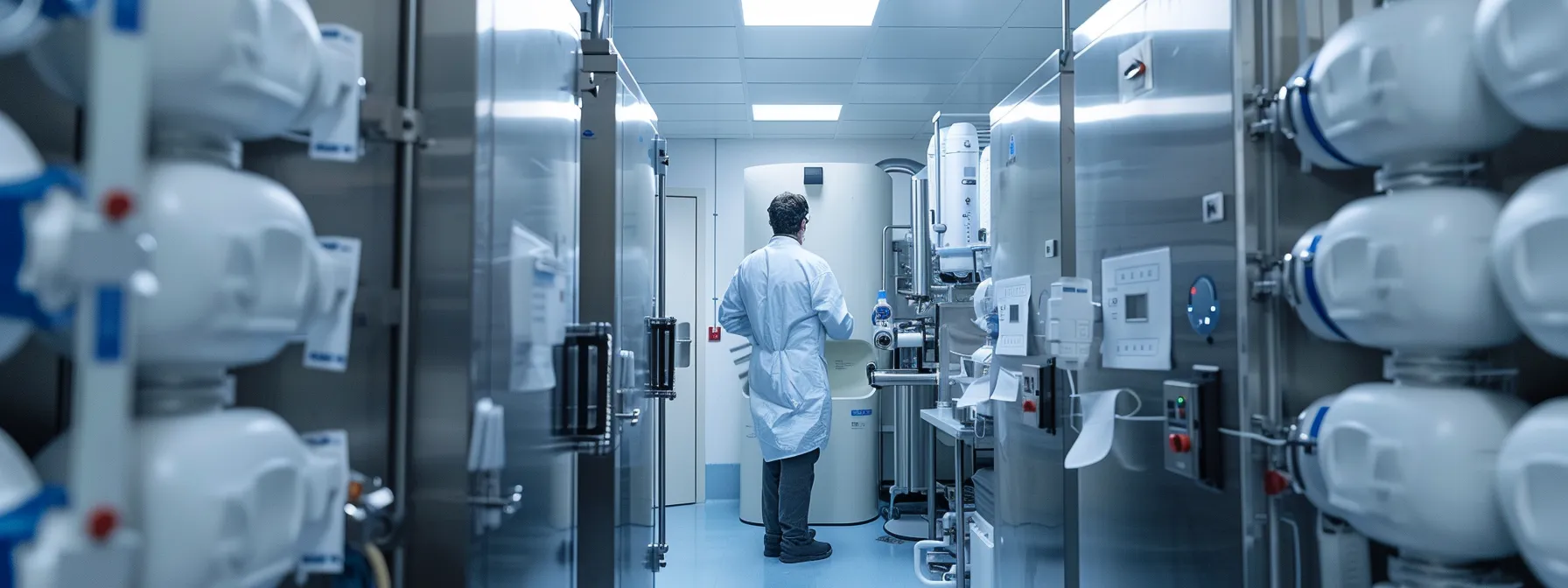
In the realm of compounding pharmacies, utilizing advanced tools becomes vital for achieving medication stability and compliance with stringent regulations. Homogenizers are essential for creating stable emulsions, ensuring that drug formulations maintain their effectiveness without the risk of contamination. Additionally, lyophilizers play a crucial role in removing solvents from sensitive compounds, thereby preserving the quality of the medications we produce. For formulations requiring strict environmental controls, investing in controlled environment equipment is necessary to protect these sensitive drugs from external factors that could compromise their integrity. By focusing on these advanced tools, we can enhance our quality assurance measures and provide safer, more effective compounded medications for our patients.
Homogenizers for Stable Emulsions
Homogenizers have become integral to my practice, particularly when creating stable emulsions for various therapies. During my time preparing sterile compounds, I’ve noted how these devices not only improve the consistency of formulations but also mitigate the effects of humidity that could lead to separation or degradation. This is especially crucial in settings such as nursing homes, where patients often rely on specific dosages for their treatment regimens, making effective compounding essential.
In my experience, utilizing homogenizers helps ensure that active ingredients are evenly distributed, which is vital for the efficacy of compounded medications. For professionals pursuing the required license in compounding pharmacy, understanding the mechanics and applications of homogenizers can significantly impact outcomes for patients, especially in the context of those requiring tailored therapy. By mastering such technology, we enhance not only the patient experience but also compliance with safety standards in our practice.
Lyophilizers for Removing Solvents
Lyophilizers are critical in my compounding practice, especially for effectively removing solvents from sensitive ingredients. In accordance with the guidelines set by the United States Pharmacopeia and the Food and Drug Administration, these devices help preserve the stability of our formulations, ensuring they meet the rigorous standards expected in pharmacy practice. When I am preparing compounds that will be used in nursing settings, utilizing a lyophilizer guarantees that we maintain medication integrity and safety.
Moreover, the importance of using lyophilizers aligns with best practices advocated by the National Association of Boards of Pharmacy. These tools not only enhance the quality of finished products but also reinforce our commitment to adhere to compliance regulations, thus protecting patient safety. A well-executed lyophilization process ultimately contributes to the reliability and effectiveness of the medications we provide.
- Lyophilizers help effectively remove solvents from sensitive ingredients.
- They ensure compliance with the United States Pharmacopeia and the Food and Drug Administration.
- Utilizing lyophilizers maintains the integrity of medications used in nursing settings.
- They enhance the quality of finished products while promoting patient safety.
- Following best practices from the National Association of Boards of Pharmacy is vital.
Controlled Environment Equipment for Sensitive Formulations
In my experience, utilizing controlled environment equipment is paramount when working with sensitive formulations, particularly those containing hazardous drugs. These specialized systems, such as laminar airflow hoods and isolators, provide the necessary protection against contamination while maintaining optimal conditions for drug stability. It’s a crucial step to enhance safety measures for pharmacy personnel and ensure the integrity of the medications we prepare.
Moreover, ensuring that the environment meets specific parameters—such as temperature, humidity, and airflow—plays a pivotal role in maintaining the effectiveness of compounded medications. I have seen firsthand how controlled environments safeguard our products from external factors that could compromise their safety, particularly when dealing with hazardous substances. This commitment reflects our dedication to providing high-quality care and protecting the well-being of our patients.
With advanced tools in hand, mastering complex compounds is just the beginning of our journey. Next, we turn our attention to the vital safety and sterilization equipment that safeguards every step of the process.
Safety and Sterilization Equipment Essentials
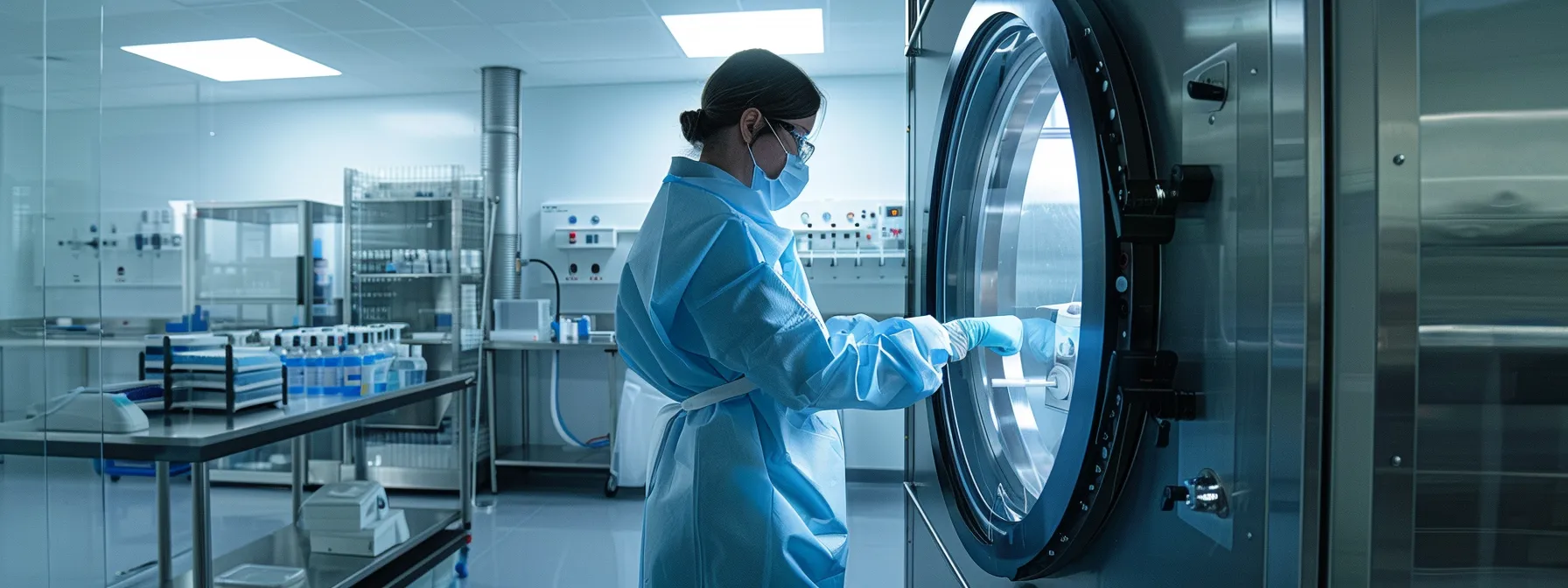
In my practice, ensuring safety and maintaining sterility are non-negotiable priorities. Utilizing laminar airflow hoods has proven essential for preventing contamination during the preparation of compounded medications. These systems create a sterile environment that protects both the formulations and pharmacy staff from hazardous exposures. Complementing this, I rely on autoclaves to sterilize tools and containers, ensuring that all instruments used in compounding are free from microbial contamination. Personal protective equipment (PPE) is also a critical component of my safety protocols; wearing appropriate gear not only shields pharmacists from potential hazards but also reinforces our commitment to maintaining the highest standards of safety in the pharmacy setting. Together, these elements foster a controlled environment where quality, safety, and compliance can thrive.
Laminar Airflow Hoods for Contamination Prevention
In my role, I prioritize the use of laminar airflow hoods to create a sterile environment during the compounding process. These devices function by maintaining a constant flow of filtered air, which shields the preparations from airborne contaminants. I’ve found that this level of protection is vital when handling sensitive compounds, ensuring the safety of both the medications and our pharmacy staff.
Additionally, integrating laminar airflow hoods into our work routine helps us adhere to stringent safety protocols. I have witnessed the positive impact of their use, as they significantly reduce the risk of contamination, particularly when preparing sterile formulations. This bolstered safety measure not only reassures patients of the integrity of their medications but also supports our efforts to uphold high standards within the pharmacy practice.
Autoclaves for Sterilizing Tools and Containers
In my experience, autoclaves are indispensable for ensuring that the tools and containers used in compounding pharmacy are free from any microbial contamination. I rely on these devices to deliver effective sterilization results through the use of high-pressure steam, which penetrates various materials and destroys harmful organisms. This is crucial for maintaining the integrity of compounded medications and ensuring patient safety.
Utilizing autoclaves has streamlined our sterilization processes, allowing us to focus on preparing high-quality formulations. I’ve found that proper maintenance and regular calibration of these machines are essential for achieving consistent results. Knowing that I can trust my sterilization equipment gives me confidence in the safety measures we implement in our pharmacy practice.
Personal Protective Equipment (PPE) for Pharmacist Safety
In my daily operations at the pharmacy, I make it a priority to equip myself and the team with the appropriate personal protective equipment (PPE) to ensure our safety. Wearing items such as gloves, masks, and eye protection creates a barrier that significantly reduces our risk of exposure to hazardous substances and potential contaminants. This practice not only safeguards our health but also reinforces our commitment to operating within the highest safety standards.
Utilizing PPE has transformed my approach to patient care, as it allows me to focus more on preparing compounded medications without the distraction of health concerns. Knowing that we are protected enables us to execute our tasks with confidence, ensuring that we maintain a sterile environment and uphold the integrity of every formulation. Ultimately, prioritizing PPE forms a crucial part of our overall strategy for quality control and patient safety.
Ensuring a spotless environment sets the foundation for success in any pharmacy. Next, let’s dive into the critical role of measuring and quality control instruments that guarantee precision and consistency in your operations.
Measuring and Quality Control Instruments
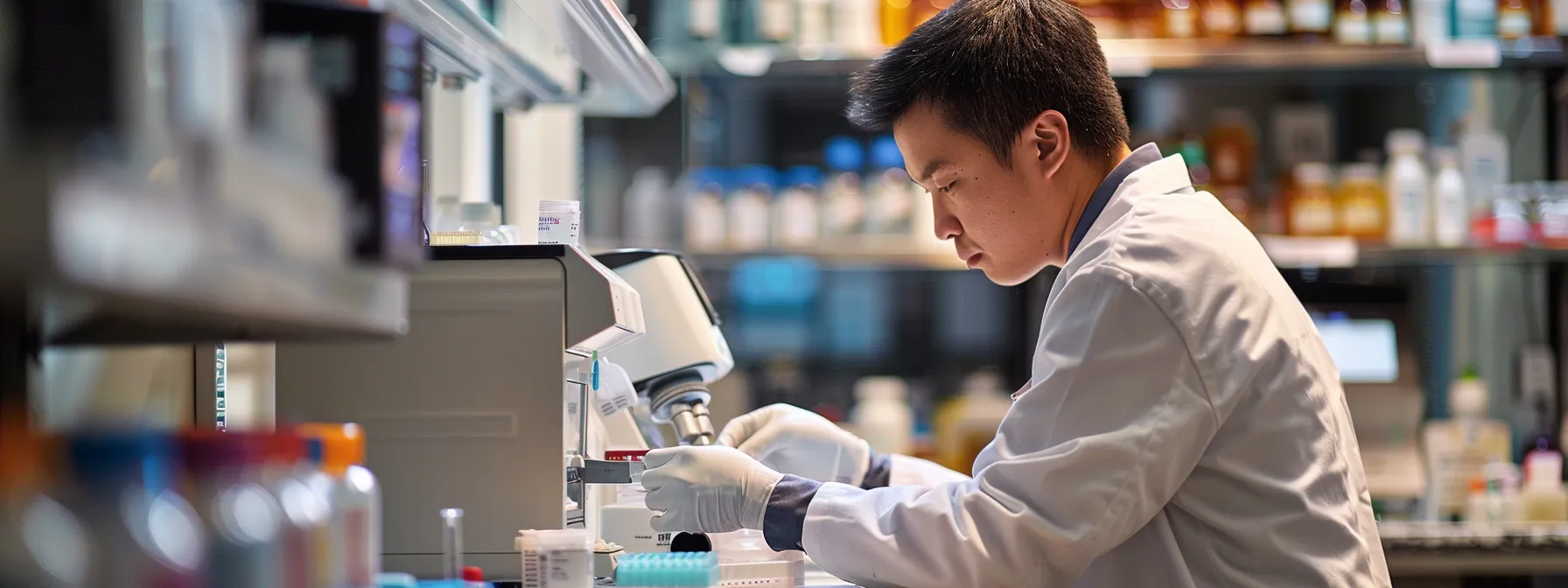
As I navigate the complexities of compounding, it becomes clear that precise measurement and consistent quality control are paramount. Utilizing instruments like pH meters allows me to carefully assess acidity and alkalinity, ensuring that formulations meet specific requirements for optimal effectiveness. Refractometers play an equally vital role by enabling accurate concentration measurements, which are crucial when creating custom solutions. Furthermore, viscometers provide important insights into the flow properties of liquids, helping me maintain the desired consistency across various compounded medications. Each of these tools contributes significantly to the reliability and safety of our pharmacy operations.
pH Meters for Acidity and Alkalinity Testing
When working in compounding pharmacy, I depend on pH meters to accurately measure the acidity and alkalinity of my formulations. This precision helps ensure that each compound meets its intended therapeutic purpose, as the pH level can significantly influence the stability and effectiveness of the drug. Consistently checking pH allows me to make necessary adjustments to maintain optimal conditions for patient care.
Incorporating pH meters into my routine not only enhances the quality of the medications I prepare but also contributes to my compliance with regulatory standards. By understanding the acidity or alkalinity of my compounds, I can prevent potential reactions that might compromise the medication’s integrity. This understanding reaffirms my commitment to patient safety and the high standards we uphold in the pharmacy environment.
Refractometers for Concentration Measurements
In my compounding practice, refractometers serve as indispensable tools for determining the concentration of solutions. By measuring the refractive index of a liquid, I can quickly and accurately assess the strength of my compounded formulations. This precision is especially critical when working with medications that require specific concentrations to ensure their efficacy and safety.
Using a refractometer not only enhances my ability to create tailored therapies but also ensures adherence to regulatory standards. Whenever I prepare a new batch, I make it a point to validate the concentration with this device, as it provides me with the confidence that my formulations meet the necessary guidelines. This systematic approach reinforces my commitment to quality control in every aspect of my pharmacy operations.
Viscometers for Assessing Liquid Flow Properties
In my compounding practice, viscometers are crucial for evaluating the flow properties of liquids, which directly affects the usability and effectiveness of the medications I prepare. When I assess the viscosity of a formulation, I gain insights into how the medication will behave during administration, whether it’s an injection or an oral solution. By ensuring that my compounds have the appropriate viscosity, I can enhance patient comfort and treatment outcomes.
Moreover, incorporating viscometers into my workflow streamlines the development of new formulations and processes. I often find that adjustments made based on viscosity readings allow me to achieve the desired consistency, which is essential for stability and ease of use. Utilizing this equipment not only ensures compliance with quality standards but also reinforces my commitment to delivering safe and effective compounded therapies to my patients.
The world of compounding equipment is rapidly evolving, presenting new opportunities for efficiency and precision. Embracing these technological advancements can set your pharmacy apart in a competitive market.
Keeping Up With Technology in Compounding Equipment
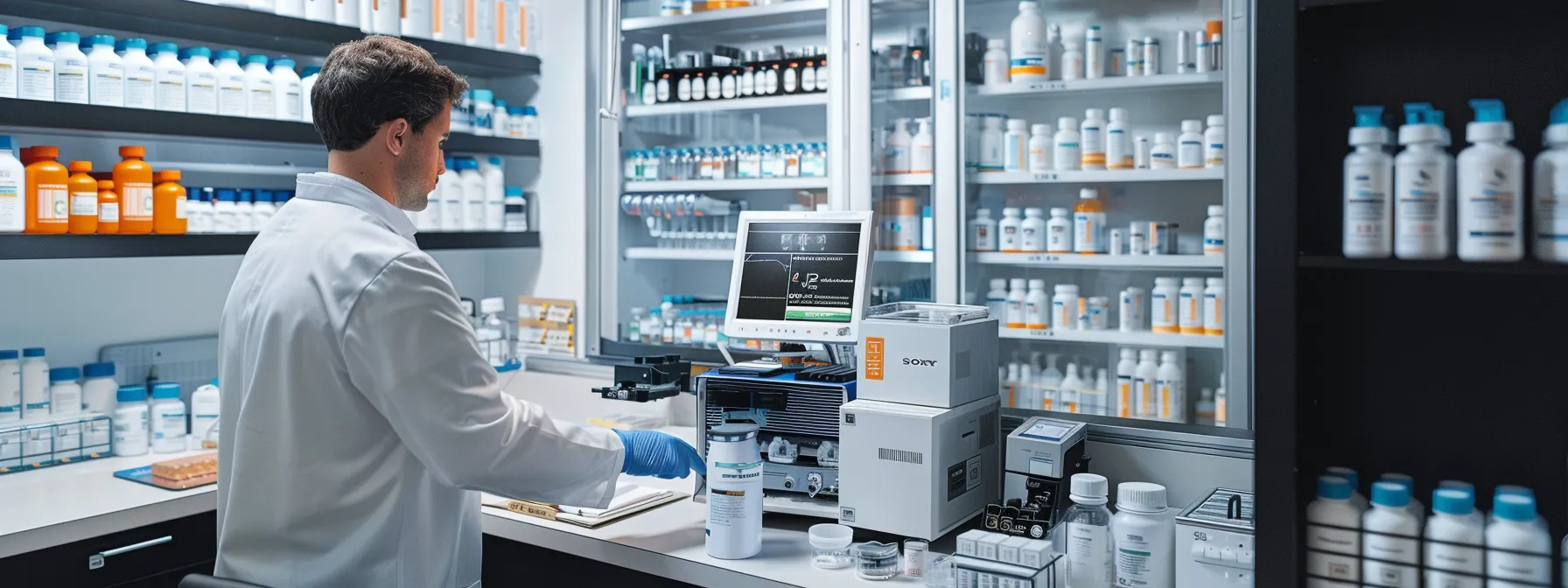
As I navigate the evolving landscape of compounding pharmacies, I continuously witness the significant impact that technology and automation have on our practices. Automation has emerged as a key player, allowing me to enhance both efficiency and accuracy in medication preparation. Additionally, leveraging specialized software for formulation management streamlines documentation processes, ensuring compliance and facilitating better tracking of compounded products. The trends in compounding equipment innovation further fuel my interest, as they introduce advanced tools that not only optimize our operations but also improve patient care. Embracing these technological advancements is essential for staying ahead in the industry and maintaining the high standards our patients deserve.
Automation in Compounding for Efficiency and Accuracy
As I embrace automation in my compounding practice, I can see firsthand how it transforms our workflow. Automation tools allow me to perform repetitive tasks with precision and speed, significantly reducing the time spent on routine operations and allowing my team to focus more on complex formulations that require our expertise.
Moreover, the integration of automated systems has enhanced accuracy in medication preparation. With automated dispensing and labeling systems, I minimize the risk of human error, ensuring each prescription is meticulously crafted and labeled, which ultimately assures our patients they are receiving safe and effective compounded medications.
Software for Formulation Management and Documentation
In my daily operations, I’ve found that using software for formulation management plays a vital role in maintaining our workflow efficiency. By automating documentation processes, I can ensure that every compounded medication is properly recorded, which not only aids compliance but also facilitates easier tracking during audits and inspections.
These software solutions also allow me to create standardized templates for various formulations, making it quicker and easier to prepare medications. The incorporation of real-time data updates ensures that all team members remain informed about formulation changes, contributing to consistent quality and safety across our pharmacy operations:
- Streamlined documentation processes enhance compliance and tracking.
- Standardized templates expedite preparation of medications.
- Real-time updates keep all team members informed.
Trends in Compounding Equipment Innovation
As I witness advancements in compounding equipment, I find that innovation is centered around enhancing precision and workflow efficiency. Cutting-edge technologies such as artificial intelligence and machine learning are becoming integral to our processes, allowing us to predict formulation outcomes and improve consistency in medication preparation. By embracing these innovations, I can ensure that our pharmacy stays at the forefront of safe and effective patient care.
Moreover, the emergence of 3D printing in compounding pharmacies signifies a paradigm shift in customized medication production. This technology not only offers the potential for creating intricate dosage forms tailored to individual patient needs but also streamlines the entire preparation process, reducing effort and time spent on complex formulations. By incorporating these innovative tools into our practice, I enhance both our operational capabilities and the overall patient experience, proving our commitment to quality care:
- Integration of artificial intelligence and machine learning improves precision.
- 3D printing enables the production of customized medications.
- Streamlined preparation processes reduce time spent on complex formulations.
Conclusion
Understanding essential pharmacy compounding equipment is vital for ensuring safety, efficacy, and compliance in medication preparation. Each tool, from balances and scales to advanced machinery like homogenizers, plays a crucial role in creating personalized medications that meet individual patient needs. By investing in the right equipment and adhering to best practices, pharmacies enhance quality control and patient outcomes. Embracing technology and continuous learning empowers compounding professionals to maintain high standards in their practice.
Share This Story, Choose Your Platform!
Get In Touch
Phone: (847) 722-6942
Email: sales@end2endlogix.com
Web: end2endlogix.com


